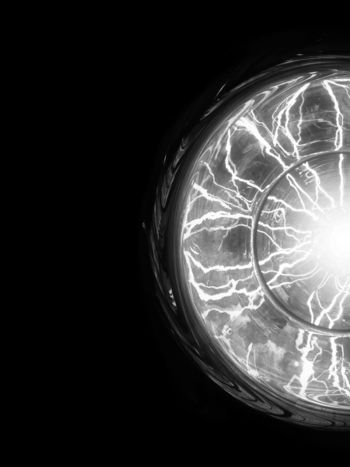Requirements and application of UHF PD monitoring systems for gas insulated systems
In the TB, the hardware and software requirements of modern ultra-high frequency (UHF) partial discharge monitoring (PDM) systems for gas insulated substations/lines are determined. It is based on abundant collected knowledge from the field combined with understanding the expectations and needs of GIS end-users. Its purpose is to provide comprehensive technical guidance to help users choose a PDM system best fitting their real needs and their level of PD knowledge. Ideally, a PDM system should reliably detect, monitor, and interpret the signals from incipient PD defects, so that asset managers can take prompt and appropriate actions to prevent equipment malfunction. This TB provides guidance for more effective use of PDM systems for GIS.
Members
Convenor (AT)
W. KOLTUNOWICZ
Secretary (CH)
G. BEHRMANN
M. BOLTZE (DE), A. CAPRARA (IT), G. COAPES (GB), F. COOK (GB), J. FLOOD (US), F. GARNACHO (SP), H. HAMA (JP), T. HUECKER (DE), C. JOHNSTONE (GB), J. Li (CN), S. NEUHOLD (CH), C. NEUMANN (DE), S. OHTSUKA (JP), S. PARSI (CA), J-F. PENNING (FR), R. PIETSCH (DE), U. RIECHERT (CH), U. SCHICHLER (AT), M. SOELLER (DE), D. TEMPLETON (GB), T. YASOUKA (JP)
Corresponding Members
R. PLATH (DE), T. ROKUNOHE (JP
Introduction
The Ultra High Frequency (UHF) method was introduced in the late 1980’s for Partial Discharge (PD) measurements and is used worldwide by gas-insulated switchgear (GIS) manufacturers routine testing, on-site acceptance testing, and by numerous utilities for online PD monitoring.
The well-known two-step sensitivity verification procedure for UHF PD measurement systems was published for the first time by CIGRE Task Force 15/33.03.05 in ELECTRA in 1999. Subsequently, manufacturers and users of GIS gained a lot of experience in the application of the proposed sensitivity verification method. In 2016, a follow-on document, TB 654, was published by CIGRE WG D1.25, building on the original 1999 paper, but going into more detail and providing supporting by examples. A sensitive UHF PD measurement is only the first step in the PD risk assessment procedure aiming to detect critical PD defects in GIS, as proposed by CIGRE WG D1.03 (TF09) and described in TB 525.
Asset management is obliged to optimise costs over the life of electrical transmission equipment, and at the same time, to meet ever higher levels of performance. The benefits of PD diagnosis on GIS have been continuously evaluated, and in 2017, a relevant TB 674 was published by WG B3.24. This document evaluated the pros and cons justifying an investment decision for PDM systems.
In this TB, attention is focused on the technical and hardware and software requirements of a modern PDM system applied to GIS. A survey of current UHF PDM technology was performed to collect available knowledge from the field and understand the expectations and needs of the users.
The resulting technical guidance will help users choose a PDM system best fitting to their needs and their level of PD knowledge.
Structure of the Technical Brochure
Chapter 1 “Introduction” presents the scope of the WG D1.66 activity in the context of Study Committee D1 activity.
Chapter 2 “Demands on modern GIS PD monitoring” presents the new drivers and expectations of today’s condition monitoring systems. The statistics of GIS dielectric failure rate are presented, the root cause for the failures of these GIS component are analyzed, and the measures that could help avoid these failures in the future are indicated.
Chapter 3 “Functions and features of current PDM systems” describes the technical advantages and disadvantages of different monitoring solutions currently available on the market together with the minimum basic requirements of a GIS PDM system. The following functions and features are considered: signal detection and coupling, PDM system hardware, noise discrimination, data transmission and control systems, and the PDM system’s operating software. The strengths and weaknesses of current PDM systems are summarized in a concise summary table.
Chapter 4 “Requirements for UHF PDM systems” is the most significant chapter, containing the following sections:
- Automated recognition of PD defects
- Practical considerations of the CIGRE Sensitivity Check on UHF PDM Systems
- UHF signal attenuation profile measurements
- PDM system commissioning
- Use of PDM systems during HV acceptance tests
- Warning and alert procedure
- Risk assessment procedure
- GIS PDM system outputs to utility asset management
- Maintenance of PDM systems over their lifetime
Chapter 5 “Example of system implementation”. The two examples illustrate how the effectiveness of a PDM system can be improved if features like automated evaluation of defect type, time of flight measurement, attenuation profile, and more sophisticated warning and alert level settings are incorporated into the system.
Chapter 6 “Conclusions and recommendations for future work”: the main areas for improvement of GIS PDM systems are covered.
An Appendix is included which discusses the special considerations associated with HVDC GIS.
Finally, a comprehensive, detailed glossary of the terms used in the brochure is included both to assist newcomers to the field and to encourage consistency in usage in future work in the field.
Demands on modern GIS PD monitoring
Changing needs for GIS PDM Systems
To understand the requirements of on-line PDM systems in the current and foreseeable future, it is important to understand the drivers for such systems, which have changed in...


